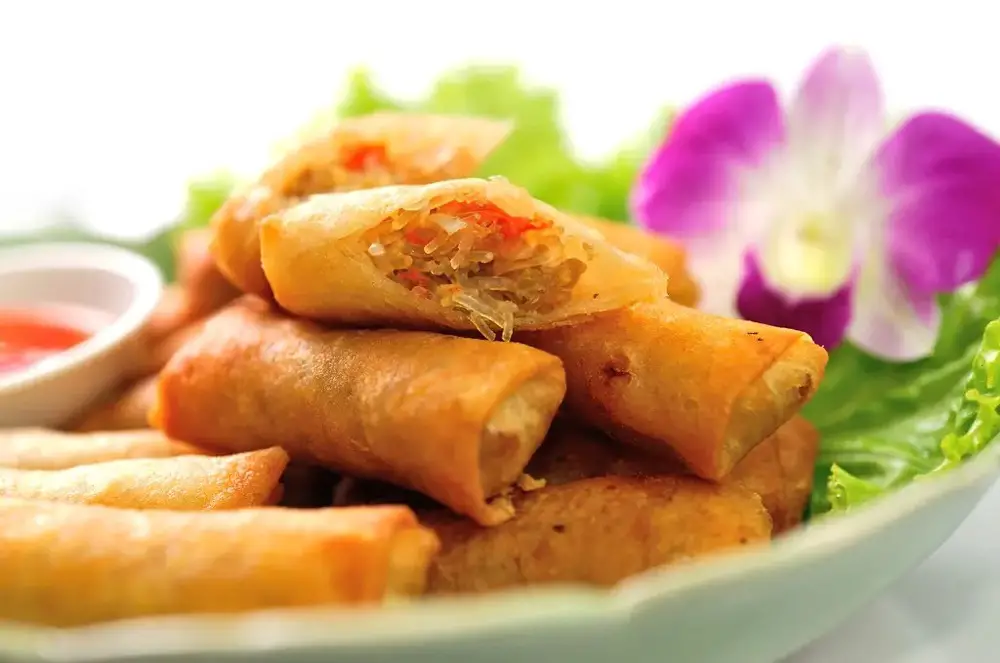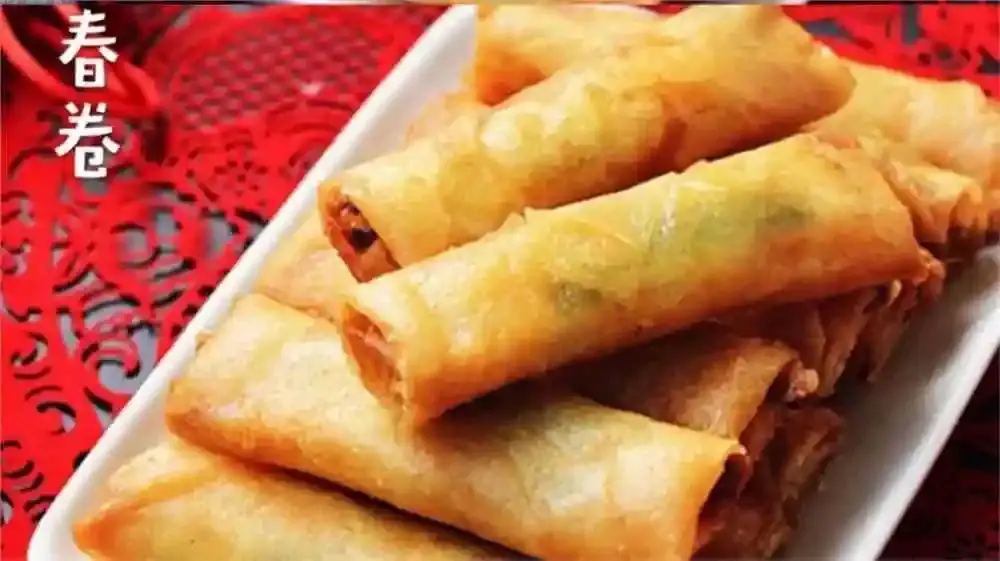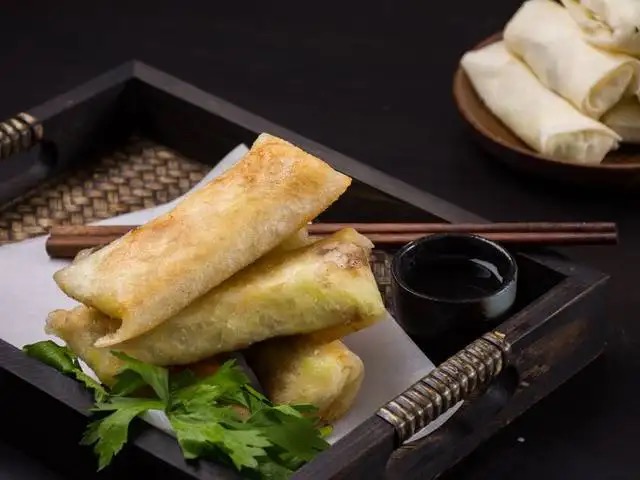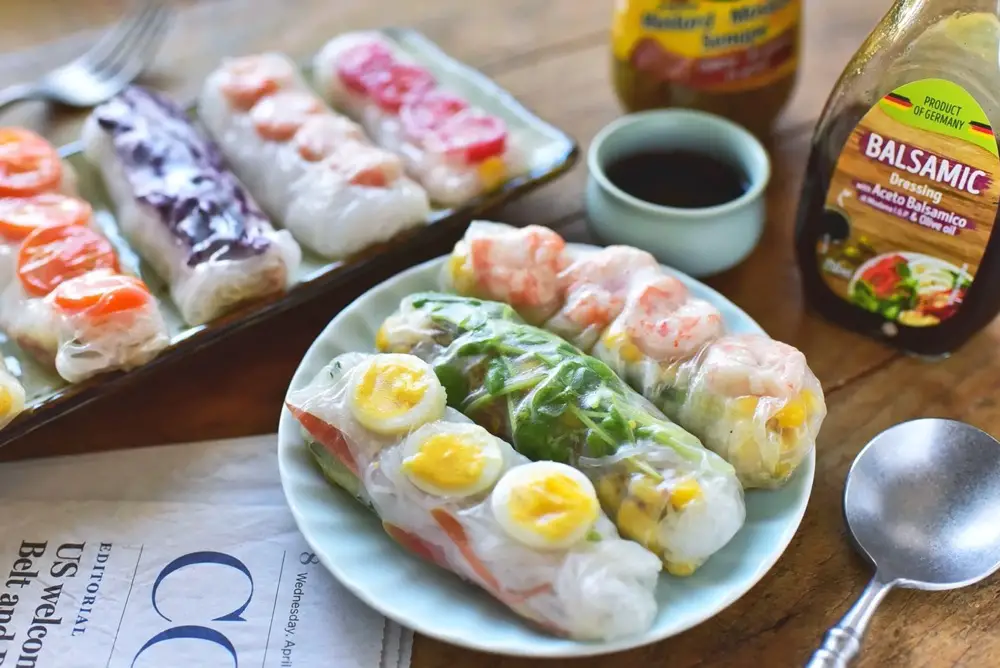China is a large Asian country that is known for its incredible culture, beautiful landscapes, and one of the best cuisines not just in Asia, but in the world at large. Because of their elaborate way of cooking and their ability to interact with food, the Chinese have managed to influence many food trends the world over. For this reason, many communities across the globe have embraced certain Chinese foods. Chinese spring rolls are one of the most common delicacies enjoyed in many parts of the world. They can be eaten as a snack, as an accompaniment, or just as a meal on their own.
There are many versions of spring rolls, but many people consider the Chinese version the original. They take a good level of skill to make, and they carry loads of flavor when made right. So, what are they made of, where in China did, they originate, what types are available, and how can you make them? Read on to find out.
What are spring rolls?

Spring rolls are a type of dim sum that is mostly enjoyed over brunch. They are a form of appetizer made from many types of filling such as beef, pork, and vegetables wrapped up in a paper-thin wrapper made from wheat and water. They get their name from the fact that, initially, they were enjoyed during spring.
Spring rolls have a cylindrical shape and are prepared by deep or shallow frying. In certain instances, however, spring rolls are not deep or shallow fried, largely because they are filled with pre-cooked filling. Oftentimes, these non-cooked spring rolls are more savory and larger than regular spring rolls.
The spring roll wrappers are made to be very thin to make sure that they do not take away from the taste of the vegetables. In essence, they make sure that the fresh filling inside stays put. To date, they are made to be extremely thin and can easily break or tear from just being touched.
What are spring rolls called in China?
In China, spring rolls are mostly referred to as thin pancakes (薄饼) or spring pancakes (春饼). The terms ‘thin pancakes’ and ‘spring pancakes’ are loose translations of the actual Chinese names.
Seeing as these delicacies are also enjoyed in other regions of the world, they go by many other names which include lumpia in Indonesia, Thailand, Singapore, and the Philippines, cha gio in Vietnam, rolinhos primavera in Brazil, and loempia in the Netherlands and Belgium.
Spring Rolls Origin

Spring rolls originated in China and were most commonly made to celebrate the Chinese New Year. As mentioned, they were made at the start of spring as a way of enjoying the fresh produce from farms after long and harsh winters when vegetables were unavailable. They were an important part of the festivities so they would be arranged like bars of gold on trays.
Before the Tang dynasty, the Chinese made thin flour pancakes that were enjoyed with fresh produce on the first day of spring. This dish was referred to as the spring dish. In the Tang dynasty, however, the spring dish would only constitute celery and carrots for the poor, but the rich would include more savory foods such as salted meats, sauces, fried foods, spinach, chives, eggs, and others.
During the Song dynasty, spring rolls served in the imperial palace became more luxurious but stayed the same for common people. The real change came in the Ming and Qing dynasties when cooks developed better cooking techniques which popularized spring rolls beyond just spring, especially because they could be enjoyed with other fillings that were not limited to fresh produce.
Their place in history was sealed during the grand banquet held during the Qing dynasty. There were 128 dishes served, and spring rolls were featured as part of the 9 pastries present. Spring rolls have since evolved and are now enjoyed in all corners of the globe.
Spring roll symbolism
Seeing as spring rolls were mostly eaten on the first day of spring to usher in the New Lunar Year, they were meant to symbolize wealth and prosperity in the year ahead. They were deep fried to a beautiful golden-brown color to resemble gold, and this is why they were arranged like bars of gold which is considered a symbol of wealth and prosperity.
Spring rolls still carry the same symbolism today, and that is why they are part of major festivities, including the Chinese New Year.
Types of Spring Rolls
Even though spring roll recipes differ mostly by filling, wrapper, and preparation methods, they are basically almost all the same thing. Below are a few types based on three attributes;
- Wrapper
Over the last several centuries, spring rolls have mainly featured wheat-based wrappers. In recent times, however, rice-paper spring rolls have become very popular, especially because they are thin, easy to acquire and work well with most fillings.
- Filling
Initially, spring rolls were only filled with fresh vegetables and fruits. However, they can now be filled with meats, pulses, mushrooms, and other food types.
- Preparation method
Spring rolls can be made in three main ways; shallow frying, deep frying, and assembling pre-cooked fillings and wrappers. The most common type, however, is the deep-fried spring rolls.
How to Make Spring Rolls
Below is a detailed Chinese Pork Spring Roll Recipe.
Ingredients
For the pork marinade;
- ¼ teaspoon salt
- ¼ teaspoon Shaoxing wine
- ½ teaspoon sesame oil
- ½ teaspoon cornstarch
- ¼ teaspoon white pepper
For the filling;
- 8 ounces of shredded pork
- 1 clove garlic
- 2 tablespoons oil
- 10 dried shitake mushrooms (soaked)
- 2 carrots
- 1 Napa cabbage
- Bamboo shoots (1 cup)
- Light soy sauce 2 tablespoons
- 1 tablespoon Shaoxing wine
- Sesame oil
- Salt
- Sugar
- White pepper
- 2 tablespoons cornstarch
For wrapping;
- Spring roll wrappers (1 pack)
- 1 tablespoon corn starch
- Canola oil
Method
Step 1: Prepare the pork filling
Place the shredded pork in a bowl and add all the marinade ingredients. Mix everything well and set aside for 30 minutes. After marinating, place the pork in a saucepan and cook till well browned over high heat. Add the garlic, oil, carrots, and mushrooms and stirfry for 30 seconds. Proceed to add napa cabbage, bamboo shoots, and Shaoxing wine then reduce the heat to allow everything to simmer. After 10 minutes, add the salt, soy sauce, sesame oil, white pepper, and sugar. Simmer until the liquid is reduced to a thick sauce. Allow the napa cabbage to wilt then stir in cornstarch mixed in water. Cook until there is no more liquid. Once cooked, transfer the pork into a bowl to cool it down.
Step 2: Wrap the filling in the wrapper
Grab the wrappers and spread them out on a clean dry tray. Add two tablespoonfuls of the filling and roll the wrapper up. Continue until all the filling is rolled in the wrappers.
Step 3: Deep fry the spring rolls
Add frying oil into a deep frying pan and add oil until it covers 3 inches. Heat the oil to 375°F. Add in the rolls a few at a time, and fry till golden brown. Enjoy them with a dipping sauce of your choice.
How spring rolls are made
How to make spring roll skin
Combine 1 cup flour, 3 tablespoons cornstarch, ¼ tablespoon salt, and 1.25 cups of water in a clean bowl. Make a smooth and light batter and cook it over low heat on a pan as you would crepes. Add ½ a ladle to your pan for each wrapper.
How to use spring roll paper
Soak the dry spring roll paper in warm water for 10 seconds then dry it on a clean paper towel. Add the filling and then roll it up.
What are spring rolls wrapped in?
Spring rolls are wrapped in paper-thin wrappers made from wheat or rice. They can be homemade or store-bought.
How to fold a spring roll
- Lay the roll out flat on a clean tray. If it is square shaped, lay it out like a diamond.
- Line the edges of the wrapper with an egg mixture made from raw eggs to secure the wrapper.
- Add the filling to the top of the wrapper and spread it out to resemble a sausage.
- Fold the sides of the wrapper over the filling then roll it up all the way to the bottom. Make sure the sides are tucked in as you roll.
How long to fry spring rolls
Fry them for about 3 to 5 minutes, or until they acquire the golden brown color you desire.
What counties have spring rolls?

Spring rolls can be found in all Asian countries and in other parts of the world like Brazil, Australia, Poland, Germany, France, Chile, Mexico, Sweden, Norway, Belgium, Costa Rica, and the USA.
Vietnamese Spring rolls vs. Chinese Spring Rolls

Vietnamese spring rolls, commonly referred to as imperial rolls, are smaller than Chinese spring rolls. They, however, contain similar types of filling, but they also feature ‘unusual’ additions like taro, cassava, and glass noodles. Vietnamese imperial rolls are only wrapped in rice paper, unlike Chinese spring rolls which can be wrapped in wheat and rice wrappers.
Conclusion
If you are looking to enjoy Chinese cuisine and don’t know where to start, spring rolls may be a great way to begin. They are delectable, can be had at any time of day, and do not require loads of expertise to make. Be sure to enjoy them with some nice dipping sauce.